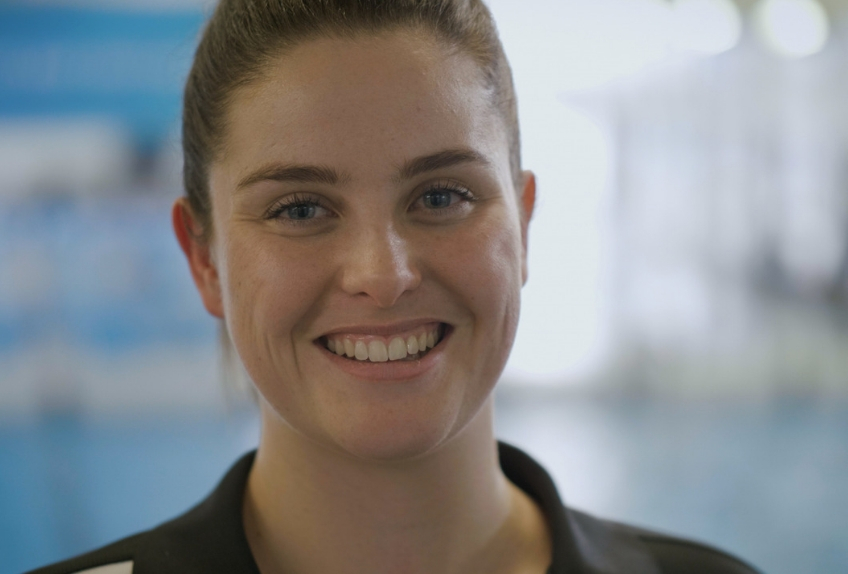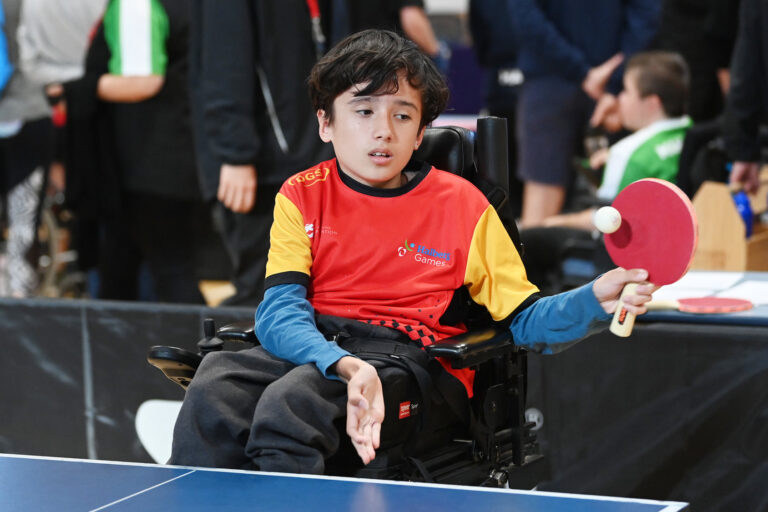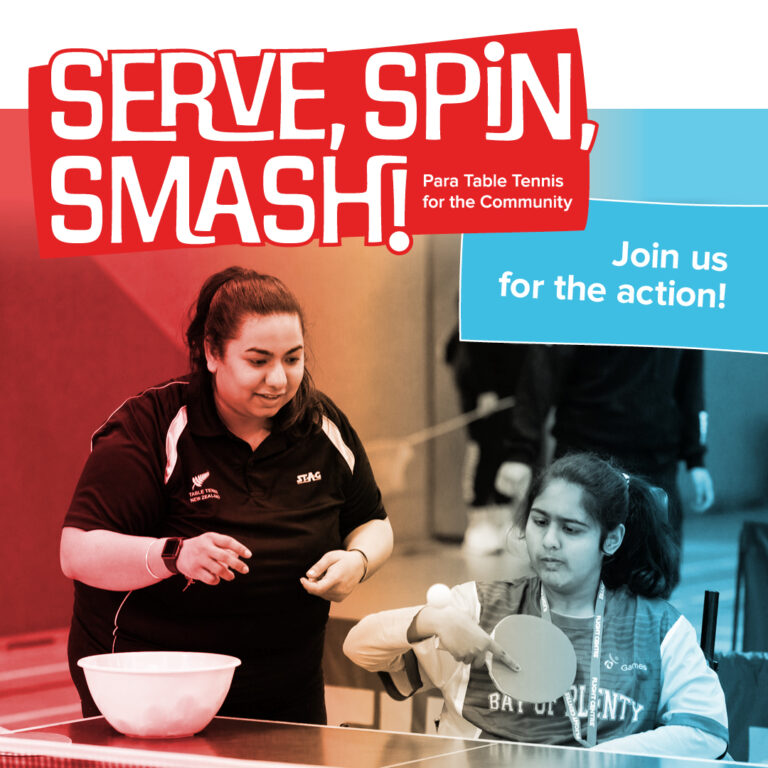Paralympians are hoping a global Toyota Mobility Unlimited Challenge will crack a technology breakthrough to improve their competition lives and the quality of life for all people with a disability.
Toyota’s challenge, which has a $US4 million prize pool, is designed to uncover innovative ground-breaking technology to assist people with lower limb paralysis.
Paralympians know from practical experience that innovations in technology can help them in their everyday lives as well as in competition at the highest level.
Para swimmer Rebecca Dubber has seen wheelchair technology improve over the last two decades since she first had one as a pre-schooler.
A bronze medallist at the Rio 2016 Paralympics, she has just started rebuilding her career after surgery for shoulder over-use injuries from years of self-propelling heavy wheelchairs around for her everyday mobility.
Now they are much lighter, having halved in weight even in the last three years down to seven kilograms, using a combination of carbon fibre, titanium and aluminium, instead of the previous alloy and steel wheelchairs. She also benefits from an electronic smart drive which clips onto the chair and provides much of the motive power.
“It’s so much easier to get about,“ explained the 25-year-old Aucklander.
The other technology which makes Rebecca’s life simpler is the hand control to drive her car. A simple lever is pulled back to accelerate and pushed forward to brake and is linked directly to the standard foot controls.
“If innovative technology comes out of the challenge and gives me access to walk down the aisle at my wedding that would be fantastic,“ says Dubber.
Cameron Leslie has been using prosthetic legs since he was two years old. The triple Paralympic gold medallist in swimming from Whangarei is also a Wheel Black competing in the sport of Wheelchair rugby.
“When I was a kid the prosthetics were pretty basic, with free swinging legs,“ says the 28-year-old. “Now the prosthetic knees have microprocessor-controlled gyroscopes to mimic the movement of a natural knee.
“Life is less tiring in general,“ says Leslie.
While he has seen countless improvements in reducing the weight of wheelchairs, when he took to the court with the Wheel Blacks in Sydney last month his wheelchair, and that of his team-mates, was strengthened for the rough and tumble nature of the sport.
The chairs, built especially for the sport are like the proverbial brick outhouse and are at least twice the weight of an everyday wheelchair.
“If people can come up with cool ideas for Mobility Unlimited and make them into something that makes a difference in people’s life that would be great,“ says Leslie.
Para cyclist Sarah Ellington has seen the technology changes, even in the three years since she had a spinal cord injury in 2015, which reduced the power she could generate in her legs.
Given only a two per cent chance of walking again she started walking with an “off the shelf“ plastic splint to support her right ankle and extending up her calf muscle. Now she has a custom-made carbon fibre one that fits “a whole lot better.“
“Mobility is everything,“ says Ellington. “It gives you independence. It would be amazing to see people walk again. You don’t realize how much you’ve lost until you have limited mobility.“
Prior to 2015 she had done enough cycling on an ordinary bike to compete in a Half Ironman. In the last 18 months Sarah has been selected into the Paralympics New Zealand (PNZ) Para Cycling National Development Programme.
She made her international debut last August and next month competes at her third World Championships in Italy, having already won two silver medals at a World Cup meeting in Belgium in May.
Now Sarah has three bikes that are designed for specific tasks – a track bike for Velodrome events, a light weight carbon fibre road bike for road racing and an aerodynamic time trial bike for races against the clock. Add in the disc wheels, aero helmet and aerodynamic skin suit.
“Technology isn’t everything in cycling,“ says Ellington. “But you’ve got to have the latest kit to be competitive.“
Paralympian Grant Sharman has seen it all.
He has been competing in a variety of Para sports since 1978 and first played for the Wheel Blacks in 1995 leading up to the Sydney 2000 Paralympics. Between 2003 and 2008 he coached the Wheel Blacks and more recently has taken up shooting Para sport with the goal of making the team for the Tokyo 2020 Paralympics.
“Every sport now has its own sport specific wheelchair. When I started we just used what we had. Wheelchair rugby now has different types of chairs for the different positions.“
Light weight and aerodynamic Para athletics track chairs can cost more than $10,000 and then a set of carbon fibre wheels can add several thousand dollars more.
Paralympians are using the same sports science as their able-bodied counterparts. “It’s all about making marginal gains,“ said Sharman.
The winner of the Toyota Mobility Unlimited Challenge will be announced during the Tokyo 2020 Paralympics, where Toyota is the mobility partner. Locally Toyota New Zealand is a supporter of both Paralympics New Zealand and the New Zealand Olympic Committee through to the Paris 2024 Paralympics and Olympics.
This media release was developed in partnership with our Major Partner Toyota.
































